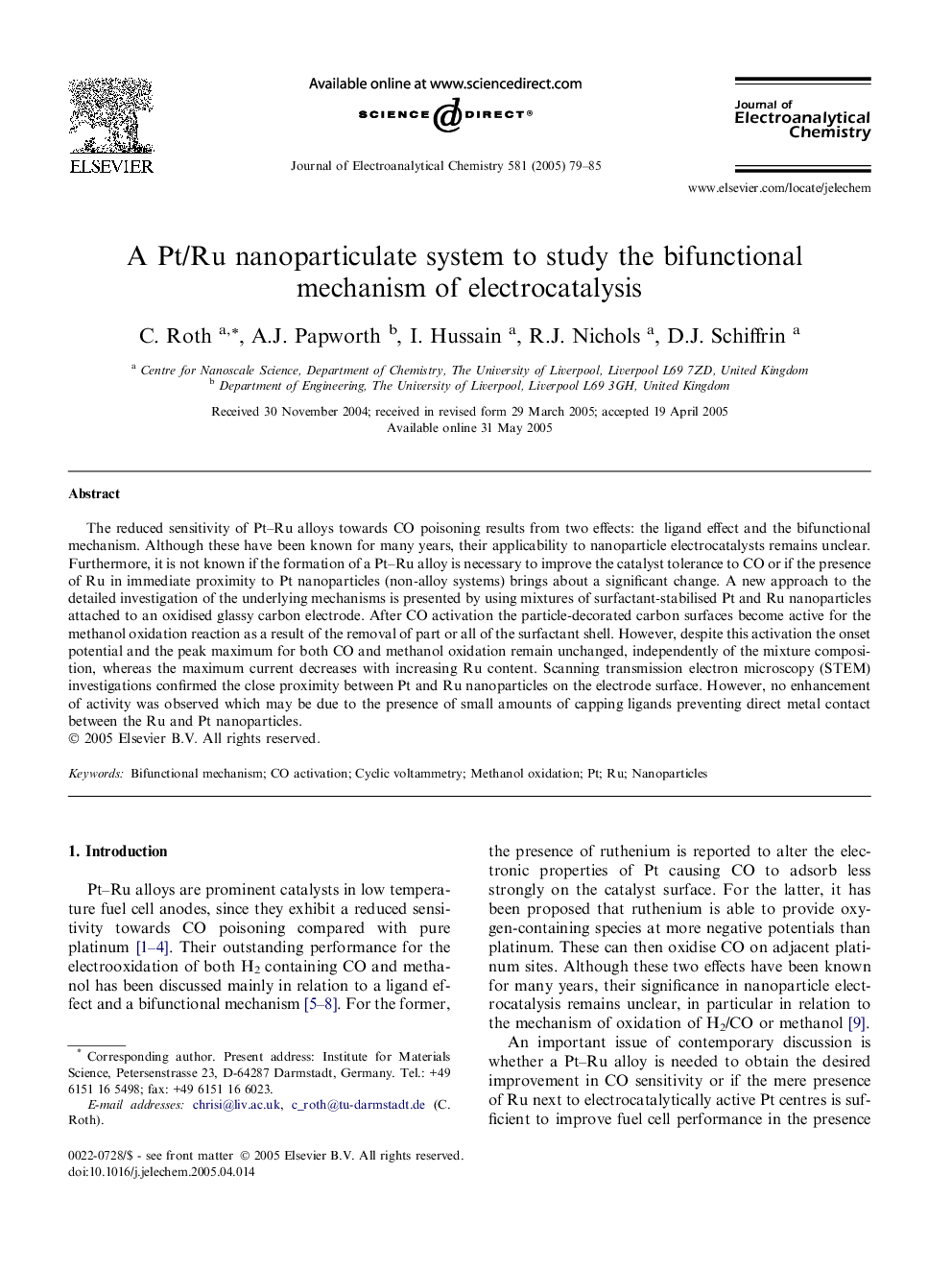| Article ID | Journal | Published Year | Pages | File Type |
|---|---|---|---|---|
| 10275799 | Journal of Electroanalytical Chemistry | 2005 | 7 Pages |
Abstract
The reduced sensitivity of Pt-Ru alloys towards CO poisoning results from two effects: the ligand effect and the bifunctional mechanism. Although these have been known for many years, their applicability to nanoparticle electrocatalysts remains unclear. Furthermore, it is not known if the formation of a Pt-Ru alloy is necessary to improve the catalyst tolerance to CO or if the presence of Ru in immediate proximity to Pt nanoparticles (non-alloy systems) brings about a significant change. A new approach to the detailed investigation of the underlying mechanisms is presented by using mixtures of surfactant-stabilised Pt and Ru nanoparticles attached to an oxidised glassy carbon electrode. After CO activation the particle-decorated carbon surfaces become active for the methanol oxidation reaction as a result of the removal of part or all of the surfactant shell. However, despite this activation the onset potential and the peak maximum for both CO and methanol oxidation remain unchanged, independently of the mixture composition, whereas the maximum current decreases with increasing Ru content. Scanning transmission electron microscopy (STEM) investigations confirmed the close proximity between Pt and Ru nanoparticles on the electrode surface. However, no enhancement of activity was observed which may be due to the presence of small amounts of capping ligands preventing direct metal contact between the Ru and Pt nanoparticles.
Related Topics
Physical Sciences and Engineering
Chemical Engineering
Chemical Engineering (General)
Authors
C. Roth, A.J. Papworth, I. Hussain, R.J. Nichols, D.J. Schiffrin,
